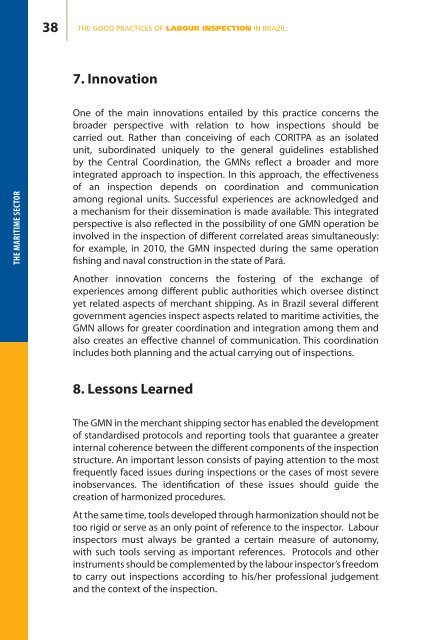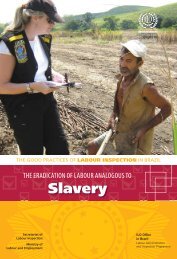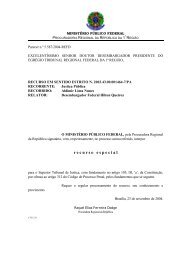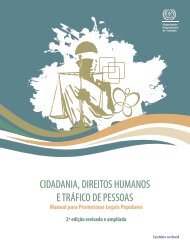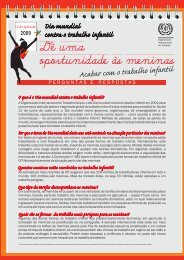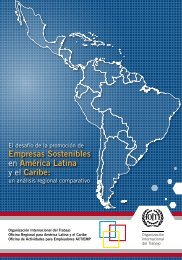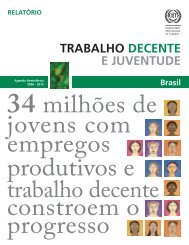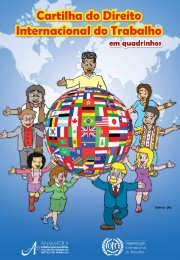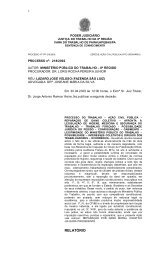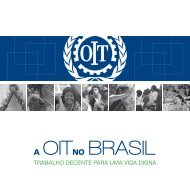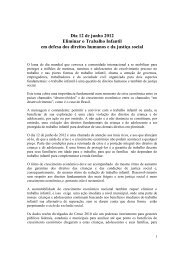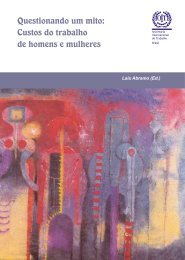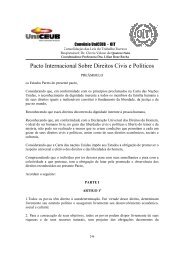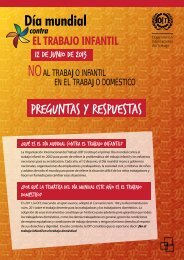The Maritime Sector
The Maritime Sector
The Maritime Sector
Create successful ePaper yourself
Turn your PDF publications into a flip-book with our unique Google optimized e-Paper software.
38THE GOOD PRACTICES OF LABOUR INSPECTION IN BRAZIL:7. InnovationTHE MARITIME SECTOROne of the main innovations entailed by this practice concerns thebroader perspective with relation to how inspections should becarried out. Rather than conceiving of each CORITPA as an isolatedunit, subordinated uniquely to the general guidelines establishedby the Central Coordination, the GMNs reflect a broader and moreintegrated approach to inspection. In this approach, the effectivenessof an inspection depends on coordination and communicationamong regional units. Successful experiences are acknowledged anda mechanism for their dissemination is made available. This integratedperspective is also reflected in the possibility of one GMN operation beinvolved in the inspection of different correlated areas simultaneously:for example, in 2010, the GMN inspected during the same operationfishing and naval construction in the state of Pará.Another innovation concerns the fostering of the exchange ofexperiences among different public authorities which oversee distinctyet related aspects of merchant shipping. As in Brazil several differentgovernment agencies inspect aspects related to maritime activities, theGMN allows for greater coordination and integration among them andalso creates an effective channel of communication. This coordinationincludes both planning and the actual carrying out of inspections.8. Lessons Learned<strong>The</strong> GMN in the merchant shipping sector has enabled the developmentof standardised protocols and reporting tools that guarantee a greaterinternal coherence between the different components of the inspectionstructure. An important lesson consists of paying attention to the mostfrequently faced issues during inspections or the cases of most severeinobservances. <strong>The</strong> identification of these issues should guide thecreation of harmonized procedures.At the same time, tools developed through harmonization should not betoo rigid or serve as an only point of reference to the inspector. Labourinspectors must always be granted a certain measure of autonomy,with such tools serving as important references. Protocols and otherinstruments should be complemented by the labour inspector’s freedomto carry out inspections according to his/her professional judgementand the context of the inspection.


